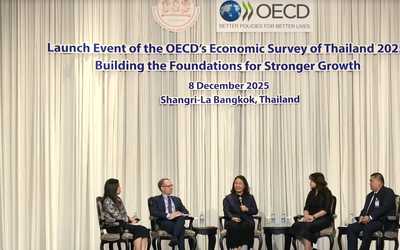Uncovering Productivity Puzzles in Thailand: Lessons from Microdata
Abstract
The Asian financial crisis in 1997 has an impact on Thailand's productivity both in the short run and in the long run. The post-crisis productivity growth rate dropped to merely 1% per year in comparison to the pre-crisis level at 2% per year. Thus, a better understanding about the factors determining Thailand's aggregate productivity is a key to raising Thailand's output in the long run. Recent literature has identified resource misallocation as an important factor to explain the difference in the productivity levels between developed and developing economies. This paper uses the plant-level data to estimate the allocative efficiency and to identify the source of resource misallocation in the Thai manufacturing sector. The results suggest that the size-dependent policies could contribute to the factor misallocation and that market concentration, foreign investment, and financial deepening could help alleviate the misallocation problem at the sector level. However, R&D activities intensifies resource misallocation that calls for well-defined policies to promote knowledge spillover within industry and to reduce the frontier-laggard gap. Dynamic resource reallocation helps shore up TFP growth over the business cycle that emphasizing a set of policy to reinforce the mechanism of creative destruction.










